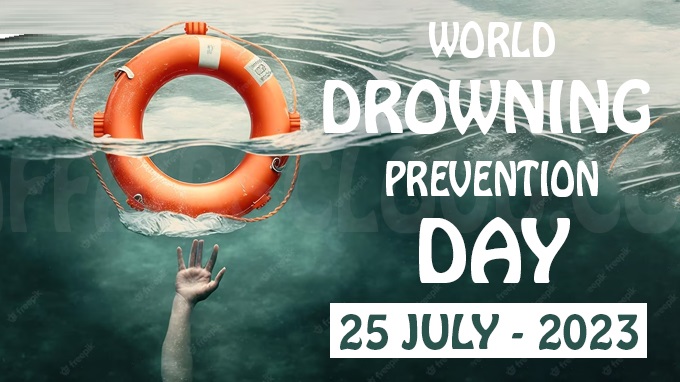United Nations & WHO observed “World Drowning Prevention Day” on 25th July

By : Partha Roy
Kolkata :United Nations & WHO observed “World Drowning Prevention Day ” on 25th July to spread awareness about drowning as well as it’s devastating impact on families and society at large.
Theme of World Drowning Prevention Day for 2023 is “Anyone can drown, no one should”
Drowning, a silent and preventable killer, continues to claim the lives of an estimated 236,000 people annually across the globe. Drowning is among the top ten causes of death for children and youth aged 1-24 years.
In South-East Asia region, drowning has had devastating consequences. In 2019 alone, it caused 70,034 deaths, making South East Asia region the second-highest contributor to drowning deaths after WPRO in the worldwide.
Drowning is the 3rd leading cause of unintentional injury death, accounting for 7% of all injury-related deaths.
Global estimates may significantly underestimate the actual public health problem related to drowning.
Children, males, and individuals with increased access to water are most at risk of drowning.
World Drowning Prevention Day, declared in April 2021 by General Assembly resolution A/RES/75/273, is held annually on 25 July. This global event highlights the tragic and profound impact of drowning on families and communities and to offer life-saving solutions to prevent it.
Global burden of death from drowning is felt in all economies and regions.
Low- and Middle-income countries account for over 90% of unintentional drowning deaths;
over half of the world’s drowning occurs in the WHO Western Pacific Region and WHO South-East Asia Region;
drowning death rates are highest in the WHO Western Pacific Region, and are 27-32 times higher than those seen in the United Kingdom or Germany, respectively.
Taking note of the high global burden, on 29 May 2023, the World Health Assembly (WHA) adopted its first ever resolution on drowning prevention ‘Accelerating Action on Global Drowning Prevention’ proposed by the Governments of Bangladesh and Ireland, and co-sponsored by at least 72 Member States. This resolution will provide impetus to strengthening drowning prevention.
It is crucial to note that drowning is not limited to coastal areas but can occur anywhere there is water, such as rivers, lakes, swimming pools, ditches, floods, and even transportation waterways. Drowning can happen in the mountain rivers and ponds of Himalayas to the deep oceans of Maldives. In fact, more than 90% of drowning deaths happen in rivers, lakes, wells, domestic water storage vessels, swimming pools .
Furthermore, the effects of climate change, rising sea levels, environmental degradation, and unprotected waterways pose additional challenges to drowning prevention efforts. The increase in unprotected irrigation channels open sewage systems also amplifies the risk of drowning. These factors exacerbate the burden of drowning-related deaths and demand urgent action.
Bangladesh has implemented numerous low-cost interventions that not only impacted on reducing drowning deaths but also generated evidence for drowning prevention in low-income settings. Maldives have started developing a National Drowning Prevention Strategy and India has started developing of a National Injury Prevention Strategy which makes specific reference to drowning prevention. Other countries have also made substantial drowning prevention initiatives. These initiatives include promoting the use of barriers to control access to water, installing door gates, covering wells, and implementing mandatory fencing around water bodies. Furthermore, countries have been actively training school-aged children in basic water safety and rescue skills, as well as bystanders in safe rescue and resuscitation techniques. While these efforts are commendable, it is essential to acknowledge that drowning remains an unrecognized threat to health and well-being, and much more needs to be done. The regions have also regularly conducted data collection . WHO launched the ‘Regional Status Reports on Drowning Prevention in the South-East Asia and Western Pacific Regions” on 22 July 2021. WHO will continue to prioritize drowning prevention and keep it at the forefront of the political and national agenda. Nations need to work collectively to raise awareness, mobilize resources, and implement evidence-based interventions to prevent drowning and protect our communities.
Dr Poonam Khetrapal Singh, Regional Director, WHO South-East Asia Region lauded Bangladesh ‘s drowning prevention approach .
WHO has invited its technical partners to: Do One Thing, Improve One Thing or Add One Thing to improve safety of people in and around water. This provides opportunities for all partners to expand on existing drowning prevention efforts, building on progress made to date.Dr Poonam Khetrapal Singh stressed and called for to unite efforts, raise awareness, and take concrete actions to prevent drowning. Together, we can save lives, protect our communities, and work towards a world where no one loses their life to this preventable tragedy.






